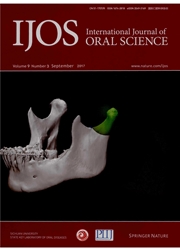

 中文摘要:
中文摘要:
The mucosal immune system defends against a vast array of pathogens, yet it exhibits limited responses to commensal microorganisms under healthy conditions. The oral-pharyngeal cavity, the gateway for both the gastrointestinal and respiratory tracts, is composed of complex anatomical structures and is constantly challenged by antigens from air and food. The mucosal immune system of the oral-pharyngeal cavity must prevent pathogen entry while maintaining immune homeostasis, which is achieved via a range of mechanisms that are similar or different to those utilized by the gastrointestinal immune system. In this review, we summarize the features of the mucosal immune system,focusing on T cell subsets and their functions. We also discuss our current understanding of the oral-pharyngeal mucosal immune system.
 英文摘要:
英文摘要:
The mucosal immune system defends against a vast array of pathogens, yet it exhibits limited responses to commensal microorganisms under healthy conditions. The oral-pharyngeal cavity, the gateway for both the gastrointestinal and respiratory tracts, is composed of complex anatomical structures and is constantly challenged by antigens from air and food. The mucosal immune system of the oral-pharyngeal cavity must prevent pathogen entry while maintaining immune homeostasis, which is achieved via a range of mechanisms that are similar or different to those utilized by the gastrointestinal immune system. In this review, we summarize the features of the mucosal immune system,focusing on T cell subsets and their functions. We also discuss our current understanding of the oral-pharyngeal mucosal immune system.
 同期刊论文项目
同期刊论文项目
 同项目期刊论文
同项目期刊论文
 Amlexanox is as effective as dexamethasone in topical treatment of erosive oral lichen planus: a sho
Amlexanox is as effective as dexamethasone in topical treatment of erosive oral lichen planus: a sho Nasal-type NK/T-cell Lymphoma with Palatal Ulcer as the Earliest Clinical Manifestation: A Case Repo
Nasal-type NK/T-cell Lymphoma with Palatal Ulcer as the Earliest Clinical Manifestation: A Case Repo Human papillomavirus 32-associated Focal epithelial hyperplasia accompanying HPV 16 -positive papill
Human papillomavirus 32-associated Focal epithelial hyperplasia accompanying HPV 16 -positive papill Tissue microarray analysis reveals the expression and prognostic significance of phosphorylated AktT
Tissue microarray analysis reveals the expression and prognostic significance of phosphorylated AktT Oral lichen planus may enhance the expression of Th-17-associated cytokines in local lesions of chro
Oral lichen planus may enhance the expression of Th-17-associated cytokines in local lesions of chro Oral cancer overexpressed 1 (ORAOV1) regulates cell cycle and apoptosis in cervical cancer HeLa cell
Oral cancer overexpressed 1 (ORAOV1) regulates cell cycle and apoptosis in cervical cancer HeLa cell Interaction Between Oral Lichen Planus and Chronic Periodontitis with Th17-Associated Cytokines in S
Interaction Between Oral Lichen Planus and Chronic Periodontitis with Th17-Associated Cytokines in S Vesicular stomatitis virus matrix protein (VSVMP) inhibits the cell growth and tumor angiogenesis in
Vesicular stomatitis virus matrix protein (VSVMP) inhibits the cell growth and tumor angiogenesis in Human Papillomavirus - 32 - Associated Focal Epithelial Hyperplasia Accompanying HPV-16-Positive Pap
Human Papillomavirus - 32 - Associated Focal Epithelial Hyperplasia Accompanying HPV-16-Positive Pap Interaction Between Oral Lichen Planus and Chronic Periodontitis with Th17 - Associated Cytokines in
Interaction Between Oral Lichen Planus and Chronic Periodontitis with Th17 - Associated Cytokines in Associations Between Three Polymorphisms in the Interleukin-4 Receptor Gene and Risk of Cancer: a Me
Associations Between Three Polymorphisms in the Interleukin-4 Receptor Gene and Risk of Cancer: a Me Honokiol : a promising small molecular weight natural agent for the growth inhibition of oral squamo
Honokiol : a promising small molecular weight natural agent for the growth inhibition of oral squamo Micro-flowers changing to nano-bundle aggregates by translocation of the sugar moiety in Janus TA nu
Micro-flowers changing to nano-bundle aggregates by translocation of the sugar moiety in Janus TA nu Interferon-gamma and interleukin-4 detected in serum and saliva from patients with oral lichen planu
Interferon-gamma and interleukin-4 detected in serum and saliva from patients with oral lichen planu The association between hypoxia-inducible factor-1 alpha gene G1790A polymorphism and cancer risk: a
The association between hypoxia-inducible factor-1 alpha gene G1790A polymorphism and cancer risk: a Integrative Approach Detected Association between Genetic Variants of microRNA Binding Sites of TLRs
Integrative Approach Detected Association between Genetic Variants of microRNA Binding Sites of TLRs Human Papillomavirus-32-Associated Focal Epithelial Hyperplasia Accompanying HPV-16-Positive Papillo
Human Papillomavirus-32-Associated Focal Epithelial Hyperplasia Accompanying HPV-16-Positive Papillo Genetic variants in AKT1 gene were associated with risk and survival of OSCC in Chinese Han Populati
Genetic variants in AKT1 gene were associated with risk and survival of OSCC in Chinese Han Populati Human Beta-Defensin-1 Suppresses Tumor Migration and Invasion and Is an Independent Predictor for Su
Human Beta-Defensin-1 Suppresses Tumor Migration and Invasion and Is an Independent Predictor for Su Oral lichen planus may enhance the expression of Th17-associated cytokines in local lesions of chron
Oral lichen planus may enhance the expression of Th17-associated cytokines in local lesions of chron Polymorphisms of microRNA-Binding Sites in Integrin Genes Are Associated with Oral Squamous Cell Car
Polymorphisms of microRNA-Binding Sites in Integrin Genes Are Associated with Oral Squamous Cell Car The Association between Hypoxia-Inducible Factor-1 alpha Gene C1772T Polymorphism and Cancer Risk: A
The Association between Hypoxia-Inducible Factor-1 alpha Gene C1772T Polymorphism and Cancer Risk: A 期刊信息
期刊信息
